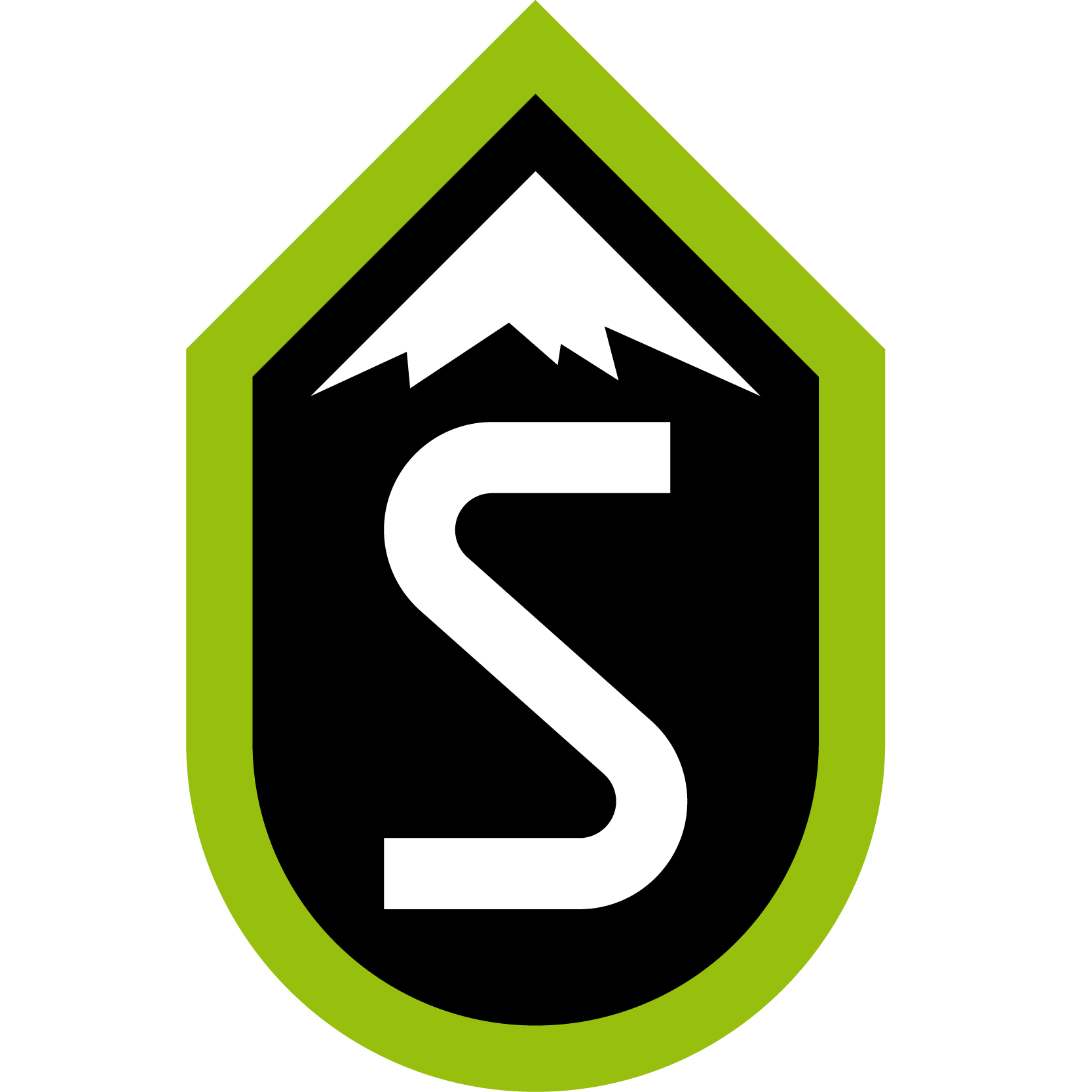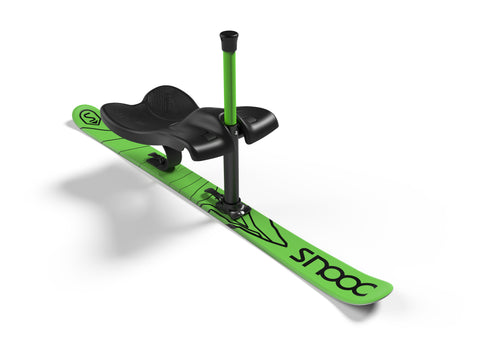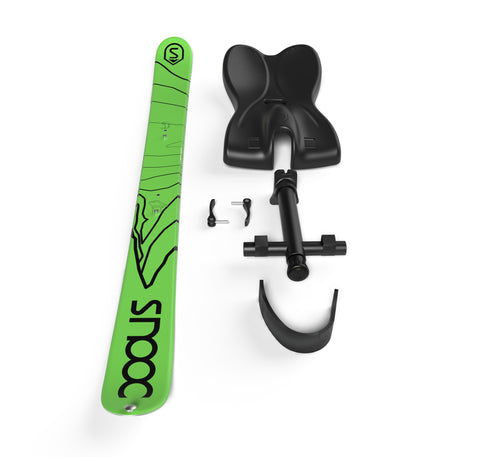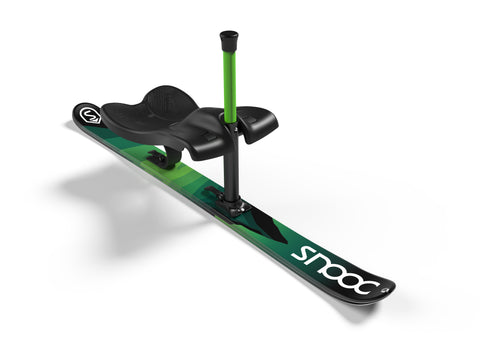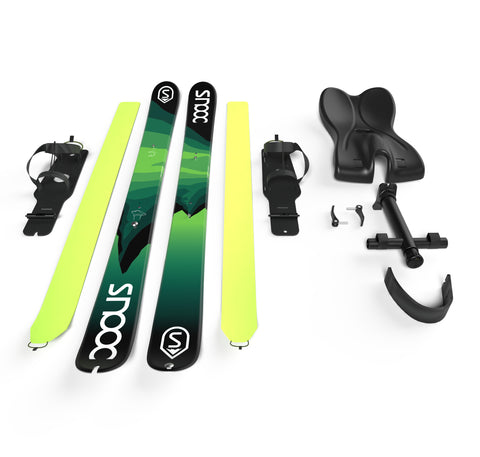The ideal snowshoe ski for exploring the great outdoors
But what is the point of snowshoe skiing? Easy! when the terrain does not justify having high-performance skis for the descent. Snowshoeing is more enjoyable than snowshoeing since it does not require any effort to lift the equipment, it suffices to slide the foot. It wears better in powder and it's quieter.
But then in the Alps you will say to me, what interest in our reliefs? Overall it is weak, except ... with SNOOC. Indeed, if skiing is not your passion, snowshoeing will not be more stable on the descent, quite the contrary. But with the SNOOC, this snowshoe ski gives you access to incredible play areas for sledding down while remaining light and comfortable on the way up.
In our article we explain everything you need to know about the practice, what type of terrain, the necessary equipment and how to practice it safely.
An ideal ski for those who want to discover nature ... but certainly not in all conditions. We will also compare it to SNOOC to allow you to choose the most suitable equipment according to your outings.

How does snowshoe skiing work?
Snowshoeing is the ideal way to browse a fairly uneven mountain and discover large spaces such as the forest, rolling mountains. It allows you to get out of marked areas and discover nature in a different way.
In a way, on the ascent we move with a snowshoe and on the descent ... on a ski ... or a pair of snowshoes that slide. You have always dreamed of snowshoeing but sliding back down ... so you have found the equipment you need.
It is a ski designed to go in powder snow and therefore never sink. It is a tool cut out for venturing onto undulating sectors with reasonable slopes. It is not a question of going down alpine slopes or in this case alpine skiing or ski touring is used when there are no ski lifts.
What is its purpose?
Discover the great outdoors and get off marked trails. It is the perfect tool to discover routes where there is no one. Whether you are in Lapland, on the Vercors plateau, on the Vosges hills, snowshoeing is perfect for discovering these wide open spaces ... as long as there is snow.
It therefore allows you to discover the mountains, nature, in a fun, playful way and is accessible to as many people as possible.
Snowshoe skiing how is it practiced?
Unlike ski touring where from his first outing the hiker does not necessarily feel confident. Thanks to the permanent anti-recoil system and a heel always free, the ski-snowshoe allows you to alternate ascents and descents, without any manipulation to do.
Please note that this is not a ski touring, since the skins are never removed. It is therefore ideal for hilly courses where you climb 150m of vertical drop then descend 200m and climb 100 meters ...
Unlike the snowshoe, you glide downhill and the walking movement becomes more fluid. We therefore move more easily and we advance much faster, especially on flat areas.
Concretely, on courses with a slight difference in height, you can move without hurrying between 4 and 5 km / h.
Below is the snowshoe skiing video.
Who is snowshoeing designed for?
Unlike alpine skiing and then ski touring, learning is very fast. It is therefore perfectly suited to beginners or those who have a poor level of alpine skiing.
From his first outing, the hiker is therefore directly in confidence and can go out in complete safety. To sum up, it is suitable for children and adults who want to take the time to discover nature.
Equipment
Snowshoeing is a real ski belonging to the Nordic hiking category. It is short and wide for maximum lift on snow.
For easy climbing, the underside has a skin on 3/4 of the ski.
Unlike ski touring or alpine skiing, it is not necessary to have a specific pair of shoes. A pair of hiking boots or a pair of boots (preferably waterproof) and you've got it all.
We also do not forget his essential pair of poles as for all practices related to skiing.
There are different brands of ski-snowshoes on the market: Sporten / Oac / Altai ...

The difference between SNOOC and snowshoe skiing?
A very good question. On the way up we are completely in the same spirit. We start with a pair of poles and off we go for the adventure.
The difference lies above all in the descent, since the SNOOC has a real alpine ski and we will seek sensations on the descent. In snowshoeing, we are looking more for a quiet descent, while the SNOOC will allow us to carve and gain more speed for those who want it.
On hilly terrain with little slope and powder, snowshoeing is more suitable. On a groomed green track, the SNOOC allows you to gain speed in complete safety.
The SNOOC is also closer to a very comfortable sled and combines the sensations of skiing and sledding on the descent.
In snowshoeing for those who want to gain a lot of speed, you have to refrain, it is not designed for that.
Quelques consignes?
We always recommend that you study your route before going out. Do not venture even at the foot of an avalanche zone. In the case of passages in avalanche zones, it is essential to use a avalanche transceiver (avalanche victim detector in order to be able to be rescued in the event of an avalanche).
It is also important to be careful and respect nature. Fauna and flora must be respected.
How to dress?
We recommend taking what is necessary depending on the weather. Generally in winter we recommend taking 3 layers:
The first layer is a technical underwear, in direct contact with the skin. Often made of synthetic fibers or merino wool, this 1st layer aims to wick perspiration outwards or to the other layers, in order to maintain your body temperature while keeping your skin dry.
The second layer is insulating, and will take care of the heat input. This fleece or wool should also have good breathability, to transfer internal moisture to the outside (or to the last layer).
This is the third layer that directly faces the outside elements. Wind, rain, snow… the jacket fulfills the technical objective, it effectively protects you from bad weather, insulates you from the outside temperature, while being breathable, waterproof and windproof.
It is always important to keep a diaper for the descent. The warmer you are, the more important it becomes to remove a diaper for your comfort, even if there is a cool wind.
